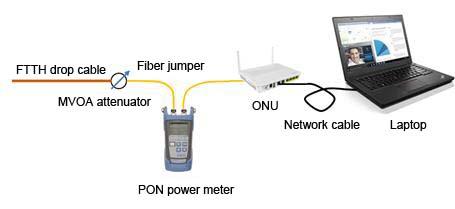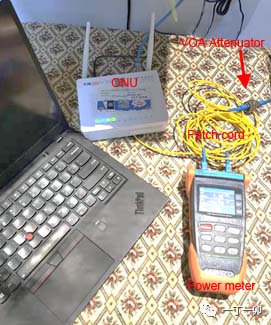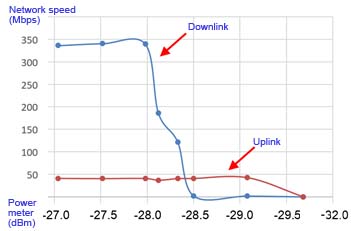ONU is what we commonly call “optical modem”. ONU weak light refers to the phenomenon that the optical power received by ONU is less than the ONU receiving sensitivity. The receiving sensitivity of ONU refers to the minimum optical power that ONU can receive when it is working normally. Usually, the receiving sensitivity index of home broadband ONU is -27dBm; therefore, ONU receiving optical power lower than -27dBm is generally defined as ONU weak light.
At present, the phenomenon of ONU weak light is very common. In some provinces, the ONU weak light rate (the proportion of ONUs with receiving optical power lower than -27dBm) even exceeds 4.5%. Such a high weak light rate will inevitably have a negative impact on the user’s Internet experience. Fine reasons in article ”causes and contermeasures of ONU weak light”
How to test the impact of ONU weak light on network speed?
There are many factors that affect the user’s Internet experience, and ONU weak light mainly affects the network speed. In order to test the impact, the following test model was built.

In the figure, a SC variable attenuator and a PON power meter are connected between the ftth drop cable and the ONU. In this way, the PON power meter can be used to measure the received optical power of the ONU online (the difference between the tested downstream optical power and the received optical power of the ONU is about 0.3dB, which is the loss of one active connection minus one fiber jumper).

By adjusting the attenuation of the VOA attenuator, the attenuation of the ODN link can be increased, causing the ONU’s received optical power to change. The change in network speed is tested by connecting a laptop to the ONU with an Ethernet cable. We tested 300M broadband in this way, and below are the test results:
| ONU receiving power (dBm) | Network speed (Mbps) | |
| Downlink | Uplink | |
| -27.04 | 336.09 | 40.67 |
| -27.52 | 340.49 | 40.28 |
| -27.98 | 339.37 | 40.54 |
| -28.12 | 186.22 | 36.58 |
| -28.33 | 121.28 | 40.3 |
| -28.5 | 2.06 | 40.55 |
| -29.08 | 1.87 | 42.54 |
| -29.68 | 0 | 0 |
The actual receiving sensitivity of most ONUs is about 1.0dB better than the index. For example, the ONU tested this time can still work normally when the received optical power is higher than -27.98dBm. When the received optical power is lower than -27.98dBm, the downstream network speed drops rapidly as the received optical power decreases, and maintains an extremely low network speed within a certain optical power range until the network is completely disconnected.

You may have noticed that the upstream speed is very different from the downstream speed. This is due to the upstream speed limit of home broadband set by the operator.
However, the upstream network speed is basically not affected by the weak light of the ONU. For the specific reasons, please refer to the article “The impact of insufficient fiber bending radius on ODN link loss”. The ONU will only emit light passively when it receives the downstream optical signal. When the ONU cannot receive the downstream optical signal, the network upstream will be interrupted.

